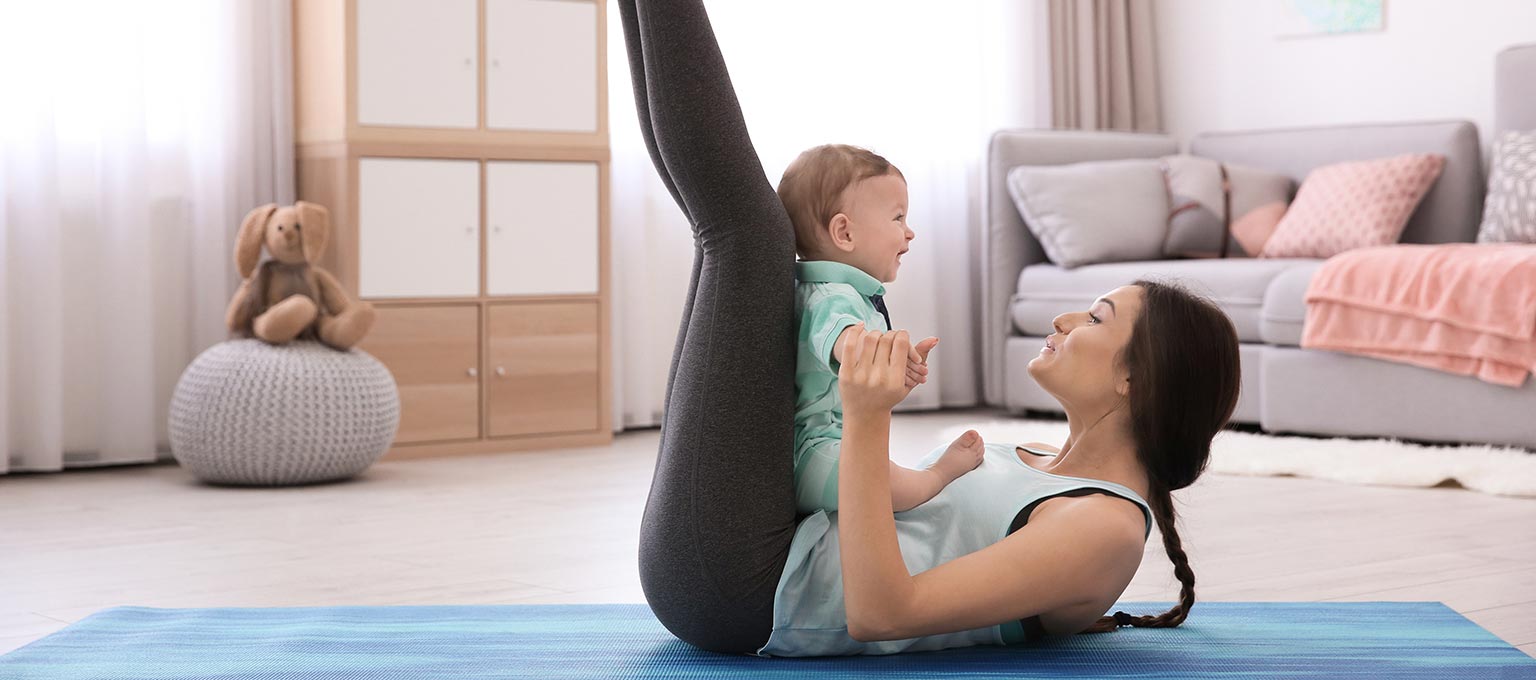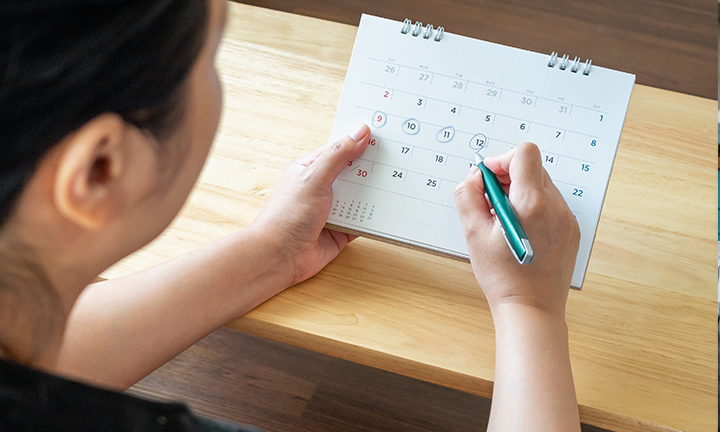
Postpartum Workout: When and How to Start Safely
Feeling unsure about when or how to restart exercise after childbirth? You’re not alone. A well-paced postpartum workout plan can help you regain strength, support healing, and boost your energy, without overwhelming your body.
Whether you had a vaginal birth or a cesarean delivery, the key is to start small and progress slowly, based on how you feel and your healthcare provider’s guidance.
Here’s a quick look at what to focus on:
In the guide below, you’ll find expert-backed answers on when to begin, how to move safely, and how to choose the best postpartum workout program for your goals—whether that’s a gentle restart or a more structured routine.
When Can You Start Exercising After Childbirth?
There’s no hard and fast rule on when during the postpartum period you can begin exercising. If you gave birth vaginally and your healthcare provider has given you the all-clear, you may feel ready to start gentle movement within a few days. For some parents, this could be soon after giving birth, while for others it may take longer.
If you had a cesarean birth or experienced complications during labor or delivery, it may take more time before you feel up to a postpartum workout. Experts generally say light activity may be safe around four to six weeks after a C-section, but it’s always best to check with your healthcare provider first.
The (Many) Benefits of Exercise After Giving Birth
There’s a lot to gain from regular postpartum workouts. Staying active after giving birth can help:
Other potential benefits include meeting other parents in postpartum group classes, having some time for yourself, and building a habit that sets a positive example for your child, now and as they grow.
Postpartum Workout Schedule
Your return to exercise depends on how you delivered your baby and how you’re recovering. According to experts, if you had a healthy pregnancy and vaginal birth, you may begin light physical activity, like walking and gentle stretching, as soon as you feel ready.
If you had a cesarean birth or experienced complications, you may need to wait until your healthcare provider confirms it's safe to begin activity. This may be around four to six weeks postpartum.
Once you’ve been cleared, the CDC recommends aiming for 150 minutes of moderate-intensity aerobic activity per week, which can be broken into short sessions across the week. You can start small and increase gradually based on how you feel.
Always follow the guidance of your healthcare provider before beginning or changing any postpartum workout program.
9 Postpartum Exercise Ideas
Although you should always consult with your healthcare provider before starting or resuming a postpartum workout, here are nine gentle yet effective exercises that may support your recovery during the postpartum period and beyond.
1. Walking
Getting outside can lift your mood, but indoor spaces like shopping malls or indoor tracks work too. You can walk with your baby in a stroller, or invite a friend or family member to join you. It’s a flexible and safe postpartum workout option that helps boost cardiovascular health and energy levels.
2. Swimming
Swimming offers a full-body, low-impact postpartum cardio workout that’s easy on your joints. Whether you prefer swimming laps or joining a water aerobics class, this can be a soothing and strengthening way to move your body.
Before jumping in the pool or beginning any new activity, it’s important to check with your healthcare provider to be sure your body has healed enough.
3. Core Exercises
During pregnancy, the abdominal and lower back muscles stretch to make room for your baby. Once your healthcare provider says it’s safe—typically around six weeks postpartum—you can begin gentle postpartum core workouts to rebuild strength and stability.
One great starting point is the pelvic tilt:
Other exercises that target your core may also support your recovery, especially if you’re easing into a postpartum ab workout or addressing separation of the abdominal muscles, known as diastasis recti.
Each of the following exercises builds on the last to support gradual strength improvement. Work your way up to doing about 20 repetitions of each, then add the next one to your routine:
These foundational movements are often part of a diastasis recti postpartum workout and may support your progress as you build strength.
4. Gentle Strength Training
Once your healthcare provider gives you the go-ahead, gentle strength training can be a great way to support your recovery. Start by focusing on major muscle groups, such as your back and core, before progressing to your arms and legs. This type of postpartum workout may help improve balance, boost metabolism, and support your weight loss goals.
You can begin with bodyweight exercises, light hand weights, or resistance bands. Options include working out at home with videos, using a postpartum workout app, or joining a gym. If you had a cesarean birth, your provider may advise avoiding anything heavier than your baby for the first six to eight weeks, so take it slow and always follow personalized guidance.
5. Postpartum Group Classes
Joining a group fitness class specifically designed for the postnatal period can help you stay active while connecting with others who are going through similar experiences. Classes may include low-impact cardio, light strength training, or dance-based movement.
Check with your local fitness club, community center, or healthcare provider to see what options are available near you. Some gyms also offer childcare, making it easier to fit a class into your day.
If you attend a class that isn’t specifically for new parents, let the instructor know you’ve recently given birth so they can offer modifications if needed. Group classes can be a motivating part of a postpartum workout plan—and a nice way to carve out a little time for yourself.
6. Postnatal Yoga
If you’re looking for a calming, low-impact option, postnatal yoga may be a helpful addition to your postpartum workout program. It can support flexibility, ease stress, and gently rebuild strength, especially in the core and pelvic area.
Look for yoga classes specifically designed for the postpartum period. Practicing with a trained instructor ensures that poses are safe, and they can offer modifications if anything feels uncomfortable. You may also enjoy the sense of community that comes with being around others at a similar stage of life.
One pose you can try at home (if your provider gives the okay) is happy baby pose—a gentle stretch for the pelvic muscles, which may feel tight or sore after birth:
Hold the position for about 90 seconds, breathing slowly.
7. Pelvic Floor Exercises
Pelvic floor exercises, also known as Kegels, help strengthen the muscles that support your bladder, uterus, and bowels. Regularly practicing Kegels may help reduce the risk of urinary incontinence after childbirth.
To do a Kegel, gently squeeze the muscles you’d use to stop the flow of urine and hold for about 10 seconds. Aim to do 10 to 20 squeezes per set, up to three times a day. The great thing about Kegels is that they don’t require any equipment and can be done at any time, anywhere.
Not sure if you’re engaging the right muscles? Check out this guide to Kegel exercises for step-by-step instructions and a helpful diagram.
8. Baby-and-Me Exercises
Before getting started, check with your baby’s healthcare provider to make sure they’re ready to join in. You might even get recommendations for local instructors or group classes from your provider.
These workouts can also be done at home or outside in a park. Whether it’s guided by an instructor or a quick session on your living room floor, baby-and-me exercises give you a chance to stay active and connect with your little one.
9. Jogging
If you're feeling ready for something more intense than a brisk walk, jogging can be a great next step in your postpartum workout plan. Once you've built up your strength and your healthcare provider has cleared you, you may feel ready to add light jogging into your routine.
When your baby is a bit older, you might even bring them along, just be sure to use a proper jogging stroller designed for this purpose. And as always, check with your baby’s healthcare provider before including your little one in your run.
Tips for Postnatal Exercise
When to See Your Healthcare Provider
Before starting to exercise again, it’s best to consult your healthcare provider to ensure it's safe for you. Once you start exercising, stop exercising and contact your provider if you
How Long Will It Take to Get Back Into Shape?
It may take six to 12 months to return to your pre-pregnancy weight, and that timeline can vary widely. Losing about one to two pounds per week is generally considered a healthy rate; however, always consult your healthcare provider to determine what’s right for your specific recovery.
Avoid crash diets. Your body needs steady energy and good nutrition to heal after birth and support your baby, especially if you’re breastfeeding. Healthy eating and regular postpartum workouts work best when paired together.
The key is to be patient. There’s no need to pressure yourself to “bounce back.” Instead, focus on moving your body because it helps you feel better and fuels the energy you need to care for yourself and your baby. Learn more about the weight you gained during pregnancy and how it fits into your long-term wellness.
FAQS AT A GLANCE
If you had a vaginal birth without complications, you may feel ready for gentle movement within a few days. If you had a cesarean birth or complications, it may take four to six weeks. Always ask your healthcare provider for personalized guidance.
The Bottom Line
Your body has been through a lot during pregnancy and childbirth, so give yourself time to recover, physically, mentally, and emotionally. When you feel ready to begin your postpartum workout, ease in gently and focus on what feels good. This is your time, and progress at your own pace matters most.
You can also check out the Pampers Rewards App for helpful offers as you care for your baby and yourself.
- American College of Obstetricians and Gynecologists. Your Pregnancy and Childbirth: Month to Month, 6th Edition (Paperback, 2016)
- American Academy of Pediatrics. Caring for Your Baby and Young Child: Birth to Age 5, 7th ed. (New York: Bantam Books, 2019).
- ACOG. "Exercise After Pregnancy."
- ACOG. "Exercises After Pregnancy (Infographic)."
- CDC. "Physical Activity Guidelines for Pregnant and Postpartum Women (PDF)."
- CDC. "Physical Activity in Pregnancy."
- Cleveland Clinic. "Exercise After Delivery."
- Mayo Clinic. "Weight Loss After Pregnancy."
- ODPHP. "Move Your Way: Postpartum Fact Sheet."
Read more about Baby
Related Articles
Join a World of Support
through Pregnancy and Parenthood.
TRACK WITH TOOLS
LEARN WITH EXPERTS
GET REWARDED











